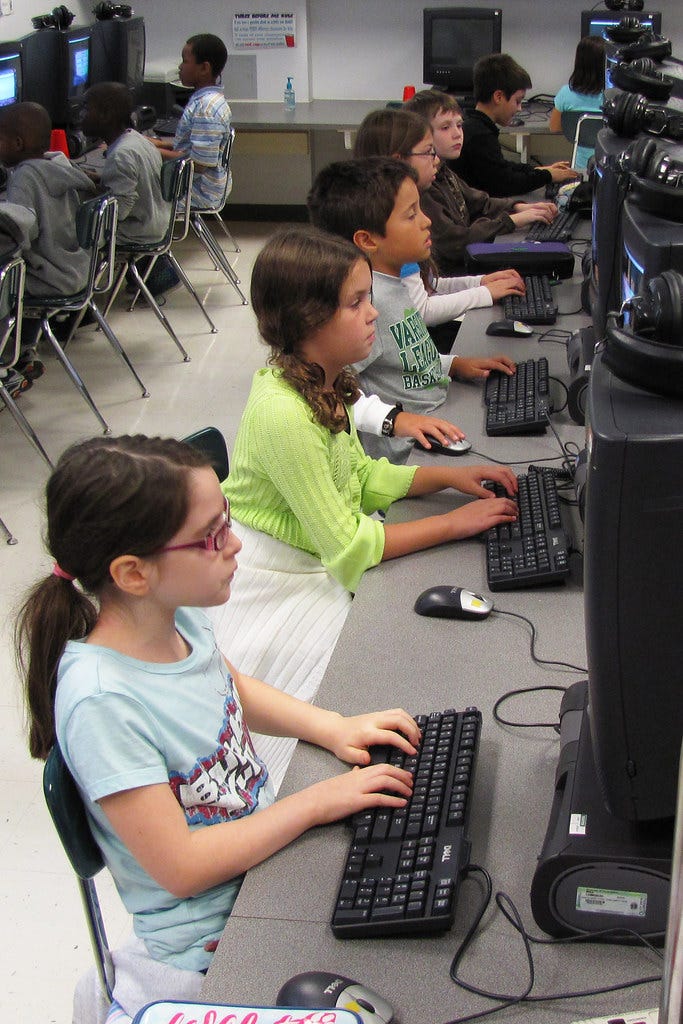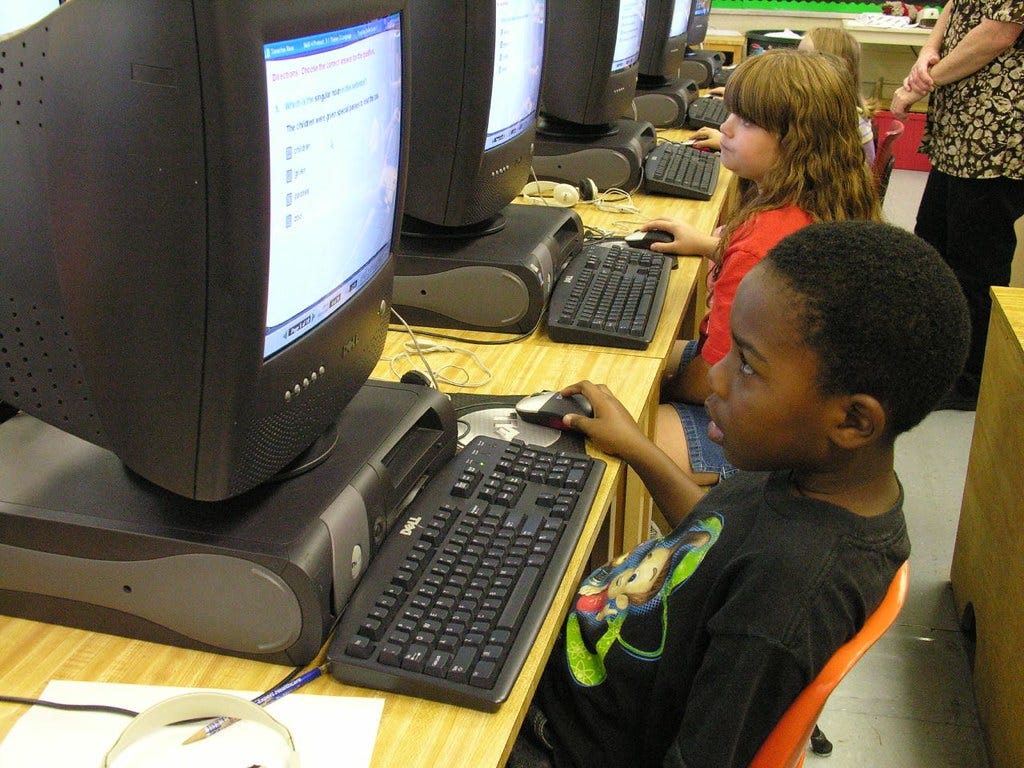The Right to Zoom, Google, and Learn
A child's ability to learn during a pandemic (and at any time) should not be premised on their race or class and the cost of remedying these differences is no excuse.
Kevin Frazier, as this post will make obvious, is in the middle of studying for finals at the UC Berkeley School of Law. In his spare time, he runs No One Left Offline, a nonprofit focused on closing the Digital Divide. Born and raised in Oregon, Kevin graduated from the University of Oregon back when its football team was still in the AP Top 25.

There's light at the end of the pandemic-induced tunnel, but even when COVID-19 restrictions are lifted millions of students will still be in the digital darkness. "Zoom" school has produced countless op-eds, facebook rants, and twitter threads calling for increased intervention from every level of government to close the Digital Divide. These pleas are warranted but insufficient. It's time to recognize that the fundamental right to education now includes access to high speed Internet; in other words, it's time to recognize a child's right to Internet access.
Thankfully, the Constitution provides two sources for this right: the Equal Protection Clause and the Due Process Clause, both housed within the Fourteenth Amendment.
No state can “deny a discrete group of innocent children the free public education that it offers to other children residing within its borders,” according to the Supreme Court's opinion in Plyler. In that case, a Texas law allowing the state to withhold funds from school districts educating children of undocumented parents was declared unconstitutional. The Court scoffed at Texas' rationale for the blatantly biased law—the State argued that educating such children would be costly.
Tough luck, Texas.
At least that's what Justice Brennan effectively wrote in his majority opinion. He reasoned that:
Public education has a pivotal role in maintaining the fabric of our society and in sustaining our political and cultural heritage; the deprivation of education takes an inestimable toll on the social, economic, intellectual, and psychological wellbeing of the individual, and poses an obstacle to individual achievement.
Texas speculating that undocumented children would be costlier to educate than other kids didn't pass constitutional muster. Students of all backgrounds may require additional support, so there's no reason to single out students of undocumented parents.
Today, a discrete group of children is again being denied access to free public education; that lack of access will continue even if schools return to in-person settings. Access to the Internet is not just necessary for "attending" class during the pandemic; it will be imperative as long as students are expected to do any work after school. Without the Internet, students cannot complete assignments, explore their interests, and fully participate in public school—what one district court judge called "the most important institution in this country."

The students on the wrong side of the Digital Divide are disproportionately students of color and students from indigent families.
The race-based divide: More than 35 percent of American Indian/Native Alaskan students do not have access to a computer nor to the Internet; similarly, upwards of 25 percent of Black and Hispanic/Latinx students have no computer access at home.
The class-based divide: Twenty percent of students in families with incomes of less than $40,000 lack Internet access.
The Equal Protection Clause forbids these sorts of outcomes. A child's ability to learn during a pandemic (and at any time) should not be premised on their race or class and the cost of remedying these differences is no excuse.
The right to Internet access is also grounded in the substantive jurisprudence of the Due Process Clause. That clause protects fundamental rights such as the right to marry, procreate, keep family together, and to refuse medical treatment. Each of these rights has a historical basis that the Supreme Court deemed sufficient to warrant constitutional protection. The right to education shares those deep historical roots.
As pointed out by historian Jill Lepore, "[t]he Constitution, drafted in the summer of 1787, does not mention a right to education." But the Constitution is not our only source of history nor the only authority on what should constitute a fundamental right. That's why the Northwest Ordinance, which held that “religion, morality, and knowledge, being necessary to good government and the happiness of mankind, schools and the means of education shall forever be encouraged" and was passed by Congress in 1787, is so important.
Of course, the Northwest Ordinance isn't the only historical source of a right to education. In Brown v. Board of Education, the Supreme Court acknowledged that education is “a right which must be made available to all on equal terms.” Likewise, the Plyler Court regarded illiteracy as “an enduring disability." Earlier cases, like Meyers and Pierce, also highlighted the centrality of a child's education to their own wellbeing as well as to the wellbeing of the country.
Surely then, there's a strong basis for a fundamental right to education in the Due Process Clause. And, as we've seen in recent times, that right should not be trampled over simply because our Internet infrastructure is aging and inadequate.
The upshot is we need to recognize a child's right to education and, by proxy, a right to Internet access. This right will give students, parents, and school officials the leverage they need to compel the government into action.
According to Justice Kennedy, it's an "enduring part of judicial duty to interpret the Constitution" in the search for fundamental rights. A modern interpretation undoubtedly recognizes that a child's right to an education is meaningless without sufficient Internet access.
Recognizing and realizing the right to Internet access would have a profound effect across Oregon. As the chart from Jeremy Ney demonstrates below, this state has left far too many in the digital darkness.
*********************************************
Keep the conversation going:
Facebook (facebook.com/oregonway), Twitter (@the_oregon_way)
Connect with Kevin:
kfraz@berkeley.edu, @kevintfrazier


